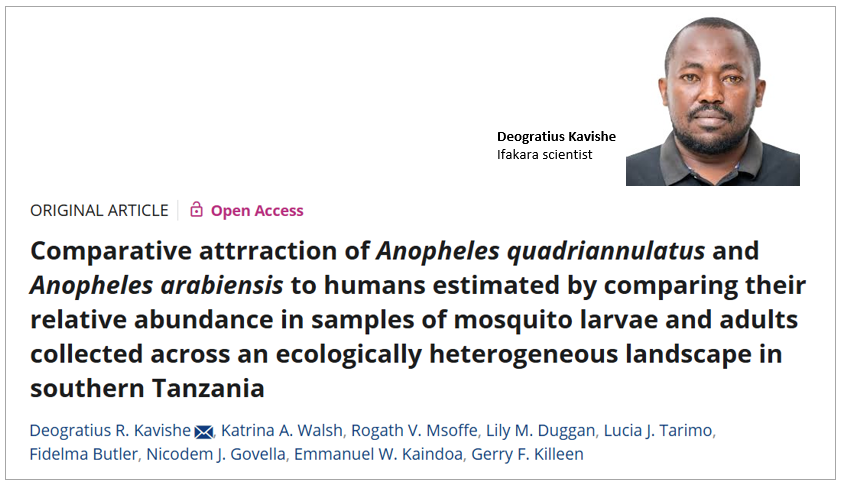
MALARIA: Ever wonder why some mosquitoes target humans—and others don’t?

New research from southern Tanzania has confirmed that anopheles arabiensis—a key malaria vector—is strongly attracted to humans. In contrast, its close relative anopheles quadriannulatus show no interest.
The findings, published recently in the journal of the Royal Entomological Society, are important because only mosquitoes that bite humans can transmit malaria.
Scientists underline that knowing which species prefer humans—and how their behavior changes in different environment—can help save lives by designing smarter mosquito control strategies, such as targeted insecticide spraying and improved trap placement.
Tanzania, Ireland scientists collaborate
The study, was led by scientists from the Ifakara Health Institute, Tanzania and University College Cork, Ireland with Deogratius Kavishe serving as lead author under the supervision of Professor Gerry Killeen.
The team also include Katrina Walsh, Rogath Msoffe, Lily Duggan, Lucia Tarimo, Fidelma Butler, Nicodem Govella, and Emmanuel Kaindoa.
A mosquito that shows strong human attraction
The research was conducted across a range of landscapes—from densely populated agricultural areas to relatively well conserved zones. Results show that although both species are commonly found as larvae in water bodies, only arabiensis was consistently caught in adult traps near humans. Quadriannulatus, while present in the environment as larvae, adults appeared to avoid areas occupied by people and showed no attraction to them.
“Anopheles arabiensis shows strong attraction to humans and dominates adult trap collections near people, even where anopheles quadriannulatus is abundant as larvae,” explained the study’s lead author.
Human presence shapes mosquito captures
The scientists camped outdoors in the wild and placed mosquito traps both near human-occupied tents and in nearby open natural areas. They found that traps placed next to people caught 20 times more arabiensis than quadriannulatus. Interestingly, even traps located away from humans but visited frequently by researchers captured more arabiensis, suggesting that even occasional human presence can draw this mosquito species in.
In contrast, quadriannulatus, a non-vector species, showed little to no interest in human presence and was mostly found in traps placed in open, undisturbed natural glades.
What this means for malaria control and surveillance?
These insights are critical for understanding the behavior of malaria vectors and improving control efforts. The study underscores the need to carefully design mosquito monitoring strategies, as human presence—even that of researchers can influence mosquito sampling results—sometimes turning standard traps into unintended human-baited traps, skewing results.
“Targeted interventions that consider species-specific behaviours, competitive dynamics, and host preference can enhance the effectiveness of malaria control programmes,” the researchers concluded. “So appropriate trapping techniques are essential for entomological surveillance to inform public health action.”
Read the publication here.
